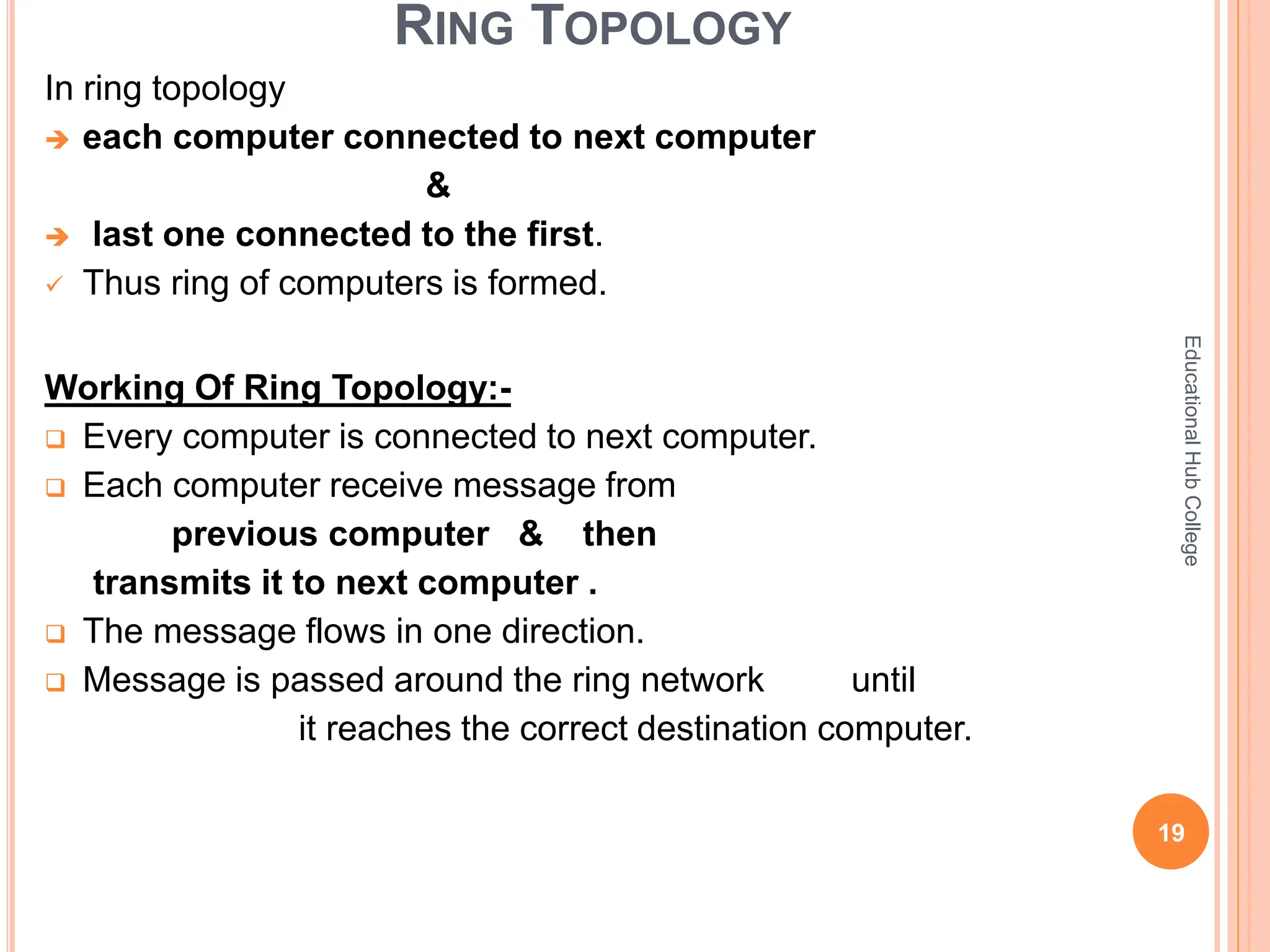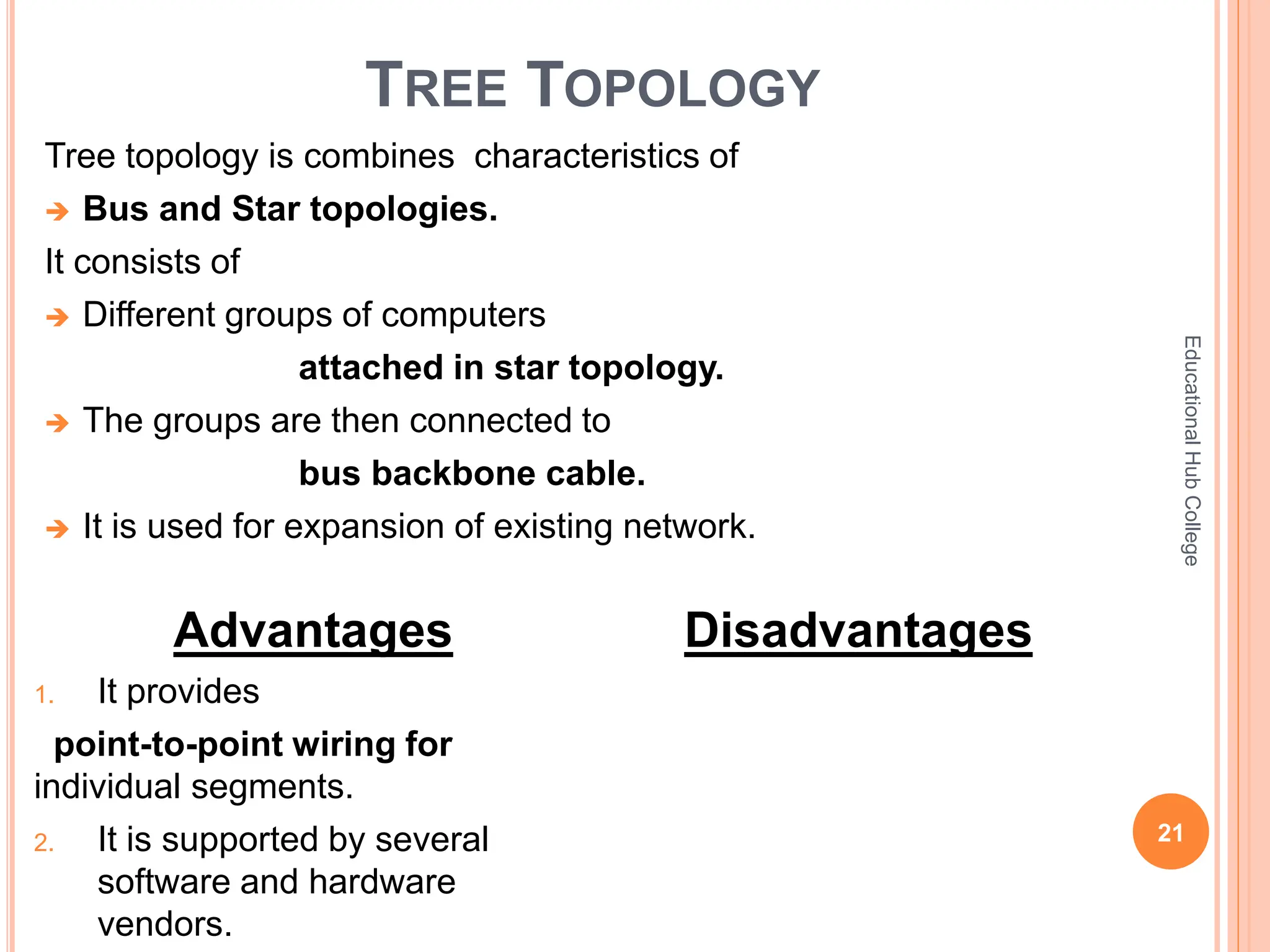This document provides an overview of computer networks and networking concepts. It defines what a computer network is and discusses different types of network models including client-server and peer-to-peer. It also describes common network devices like servers, clients, routers, gateways and bridges. Additionally, it covers network topologies, standards, and the concept of a local area network (LAN).

































































